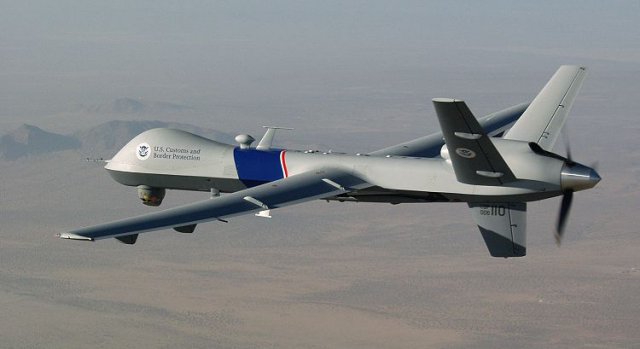U.S. unmanned jets fielded to catch border trespassers have not proved their worth — with an annual cost of $62.5 million and few apprehensions to show for it, according to a federal watchdog report.
The study, released Tuesday, also found the Department of Homeland Security lowballed spending for drone operations by not including personnel expenses and other significant investments. According to inspectors, one hour of flight costs $12,255, while the Customs and Border Protection agency only calculates the figure at $2,468.
Given the programme “cannot demonstrate its effectiveness, as well as the cost of current operations,” CBP should “reconsider” plans to spend $443 million on 14 more unmanned aircraft, the DHS inspector general report stated.
One of the drones would replace an unmanned vehicle that went down off the California coast last year after a mechanical failure.
CBP could “put the $443 million it plans to spend to expand the programme to better use by investing in alternatives, such as manned aircraft and ground surveillance assets,” according to inspectors.
The stated purpose of the current fleet of nine unmanned aircraft systems, or UAS, is to boost arrests of illegal border crossers, reduce monitoring costs and pinpoint surveillance gaps. But inspectors said they “found little or no evidence that CBP met those expectations.”
In fiscal 2013, drones contributed to 1.8 percent of apprehensions in the Tucson border sector and .07 percent of arrests in Texas’ Rio Grande Valley. There were 120,939 apprehensions total that year in Tucson and 154,453 in the Rio Grande.
According to Arizona border patrol agents and intelligence personnel, authorities likely would have found the intruders using tools on the ground, without help from the drones. Such land-based apparatus include agents’ portable surveillance systems, ground sensors, towers mounted with radars or cameras, and human patrols.
After receiving poor marks from inspectors several years ago for missing flight hour goals, the agency continues to let drones sit idle. In fiscal 2013, the remotely-piloted planes were grounded 78 percent of the time they were supposed to be flying. The drones sat unused 63 percent of the time in 2011, the last time inspectors conducted an audit.
CBP officials, responding to a draft report, disagreed with the inspectors’ characterization of the drones as nonproductive.
“There have been countless successful CBP missions over the years in which UAS capabilities and resulting products have contributed significantly to the successful investigation, dismantling and disrupting of criminal enterprises and organizations,” said Eugene Schied, assistant commissioner for the CBP Office of Administration, in an October letter.
Funding constraints prevented the agency from meeting flight hour goals, he said.
The target numbers, set in 2010, were based on the assumption drone budget levels would remain the same. But because of departmentwide spending cuts, CBP has not met flight hour objectives, Schied said.
CBP officials also contend the $443 million proposal to buy new unmanned jets is outdated and there are no intentions right now to acquire more than the one substitute vehicle.
Multiple layers of security – including personnel, infrastructure, drones and other technology – coalesce to protect the border, according to the agency.
“In the view of the local Border Patrol field leadership, the asset is a critical contributor to border security,” Schied said.
Source: Nextgov

